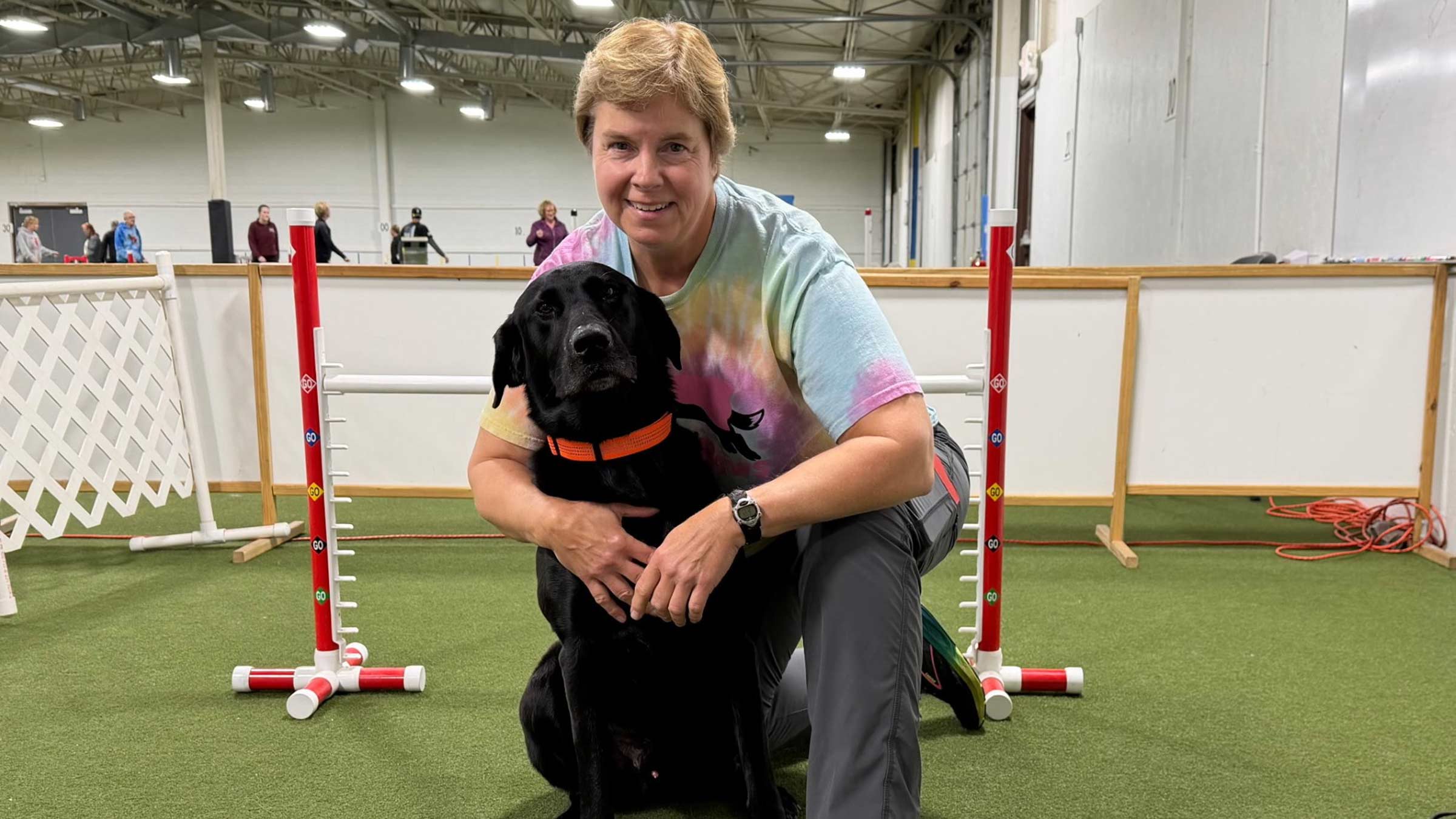
Outside in 80-degree-plus weather, you’re likely wearing shorts and a short-sleeved shirt. If you were to put on thick winter coat over that, you’d start to feel how oppressively hot your dog might be when out on a walk or run.
But you would be able to sweat under that coat, releasing heat. Your dog can’t sweat under their coat.
Dogs can only sweat through their paw pads. They can also pant to let out heat, but on a humid day, that may not work well. Panting can even backfire, generating more heat because their muscles are working so hard. It can be a vicious cycle for a dog trying to find relief. They may pant profusely, and yet stay hot — or worse, get hotter.
Some dogs are more vulnerable to heat stroke than others. They include the brachycephalic or “smooshed face” breeds such as bulldogs, pugs, Boston terriers and Pekingese. Dogs of any breed that are older, out of shape or overweight, have long hair or a dark coat are also more at risk for heat stroke.
I tell my clients to watch how their dog is behaving while they’re out on summer days. Be aware of signs of heat stroke.
The most common mistake I see is pet owners taking dogs that are overweight and out of shape for super long walks on the first warm days of the season. People get so excited to be outside on a beautiful day and become overly zealous about their dog losing weight and getting in shape that they push too fast., Their dog isn’t ready for it and can develop heat stroke.
Signs of heat stroke
Symptoms of heat stroke for dogs include:- panting intensely, never slowing down after five to 10 minutes
- keeping stopping to rest, lie down or seek out shady areas
- stumbling
- throwing up
- having diarrhea
- developing bright pink or red gums
- temperature rising to 104 degrees or higher
A dog’s normal body temperature is 99 to 103 degrees. If it’s 104 degrees or more, bring your dog to a veterinarian. High temperatures can lead to organ failure and death, if not treated immediately.
If you’re outside without a thermometer on hand, move to a cool area and monitor their panting. After stopping exercise and moving to a cooler area, their panting should slow down. If panting doesn’t slow after five to 10 minutes, take them to the nearest veterinarian to be evaluated.
How to take your dog’s temperature
If you have a thermometer, lubricate the tip of it with petroleum jelly before putting it into your dog’s rectum. Insert slowly about 1 inch for small dogs and 2 to 3 inches for larger dogs. If you feel stool in the rectum, try to place thermometer around it rather than through the stool, which could lead to a falsely low temperature reading. Leave the thermometer in place for two minutes or, if you have an electronic thermometer, until it beeps.
How to cool down a dog
If your dog is showing enough signs of distress, it’s time to move inside to air conditioning — and quickly.
- Give your dog cool water or ice.
- Wet them down.
- Put wet towels on top of them.
- Place them in front of a fan or air conditioning vent.
- Wrap ice packs in towels and lay them across their neck and armpits.
When should you not walk your dog on pavement?
Besides getting overheated, dogs can also get burned. Hot sidewalks and pavement can easily burn their paw pads. Put your hand on the ground. If it’s too hot for your hand, it’s too hot for your dog to walk over it. You can consider putting booties on your dog’s feet to protect them from the hot ground.
Dogs in hot cars are unsafe
While the hot outdoors can be dangerous for your dog, so can the indoors — especially hot cars. Leaving your pet inside a car during the summer can be extremely dangerous and is not recommended. The temperatures inside a car can climb dramatically in just 10 minutes — even with the windows cracked open. It’s best to leave them home on warm days if you’re running errands.
Summertime is a great time to be outside and active with your dogs. Following these tips will help keep them happy and healthy.

Compassionate, cutting-edge care for pets and animals
At The Ohio State University Veterinary Medical Center, our top priority is making the world healthier for animals and the families who love and care for them.
Learn more about our services




